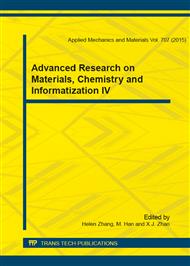[1]
Hermann Steffan B.C. Geile. A New Approach to Occupant Simulation through the Coupling of PC-Crash and MADYMO. SAE Paper. No. 1999-01-0444. 1999: l-5.
DOI: 10.4271/1999-01-0444
Google Scholar
[2]
Bruce Hongola, Cheng-Yao Chan. Simulation and Animation Tools for Analysis of Vehicle Collision: SMAC(Simulation Model Automobile Collisions)and Carmma (Simulation Animations). California PATH Working Paper. ISSN: 1055—1417. 1999: 3-5.
Google Scholar
[3]
Cheng—Yao Chan. Studies of Vehicle Coll isions—A Documentation of the Simulation Codes: SMAC(Simulation Model of Automobile Collisions). California PATH Working Paper. ISSN 1055—1417. 1998: 2-7.
Google Scholar
[4]
Mchenry B. G., Mchenry R . R. SMAC97 - refinement of the Collision –algorithm. SAE Paper. No. 970947. 1997: l-3.
DOI: 10.4271/970947
Google Scholar
[5]
Richard P. Howard, John Boomer, Cleve Bare. Vehicle Restitution Response in Low.
Google Scholar
[6]
Mchenry B.G., Mchenry R.R. CRASH 97-refinement of the Trajectory Solution Procedure. SAE Paper. No. 970949. 1997: 2-4.
DOI: 10.4271/970949
Google Scholar
[7]
James A. Neptune, James E. Flynn. Impact Analysi s Based upon the CRASH Damage Algorithm. SAE paper. No. 950358. 1995: 1-2.
Google Scholar
[8]
Kenneth. Campbell. Energy Basis for Collision Severity. SAE Paper. No. 740565. 1974: l-4.
Google Scholar
[9]
Mchenry R.R. Mchenry B.G.A. Revised Damage Analysis Procedure For The CRASH Computer Program. SAE Paper. No. 86 1894. 1986: l-2.
DOI: 10.4271/861894
Google Scholar
[10]
Marcus Hiemer, Sebastian Lehr, Uwe Kiencke. A Fuzzy System to Determine the Vehicle Yaw Angle. SAE Paper. No. 2004-01-191. 2004: 1-9.
DOI: 10.4271/2004-01-1191
Google Scholar
[11]
Michael S. Varat, Stein E. Husher. Crash Pulse Modeling for Vehicle Safety Research. The 18"PESV Paper. No. 50 1. 200 1: 1-5.
Google Scholar
[1]
Dj.M. Maric, P.F. Meier and S.K. Estreicher: Mater. Sci. Forum Vol. 83-87 (1992), p.119.
Google Scholar
[2]
M.A. Green: High Efficiency Silicon Solar Cells (Trans Tech Publications, Switzerland 1987).
Google Scholar
[3]
Y. Mishing, in: Diffusion Processes in Advanced Technological Materials, edtied by D. Gupta Noyes Publications/William Andrew Publising, Norwich, NY (2004), in press.
Google Scholar
[4]
G. Henkelman, G. Johannesson and H. Jónsson, in: Theoretical Methods in Condencsed Phase Chemistry, edited by S.D. Schwartz, volume 5 of Progress in Theoretical Chemistry and Physics, chapter, 10, Kluwer Academic Publishers (2000).
Google Scholar
[5]
R.J. Ong, J.T. Dawley and P.G. Clem: submitted to Journal of Materials Research (2003).
Google Scholar
[6]
P.G. Clem, M. Rodriguez, J.A. Voigt and C.S. Ashley, U.S. Patent 6, 231, 666. (2001).
Google Scholar
[7]
Information on http: /www. weld. labs. gov. cn.
Google Scholar


